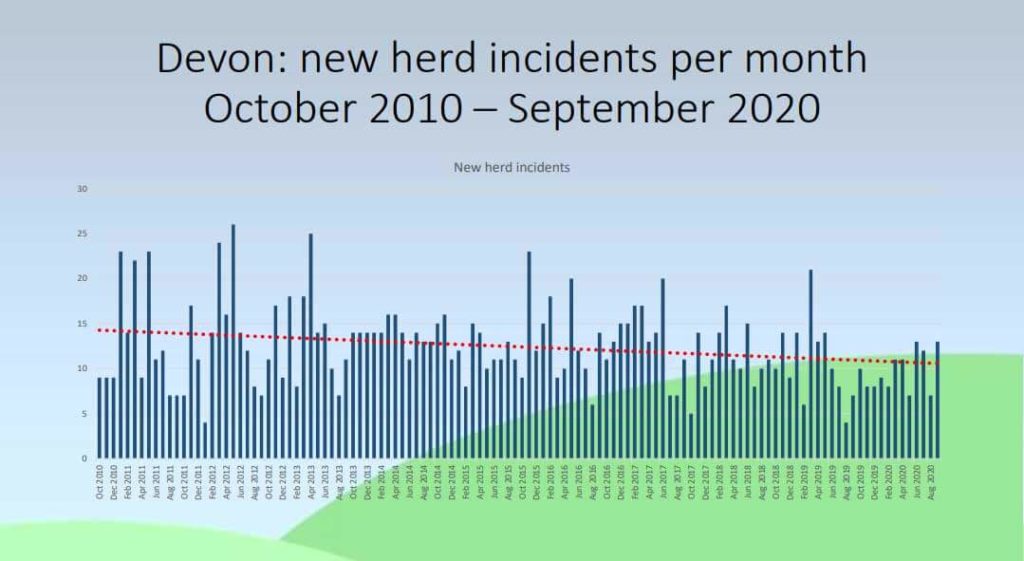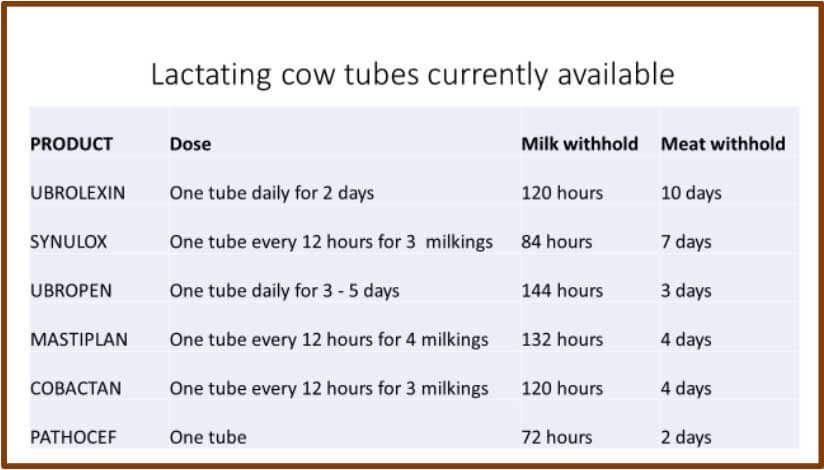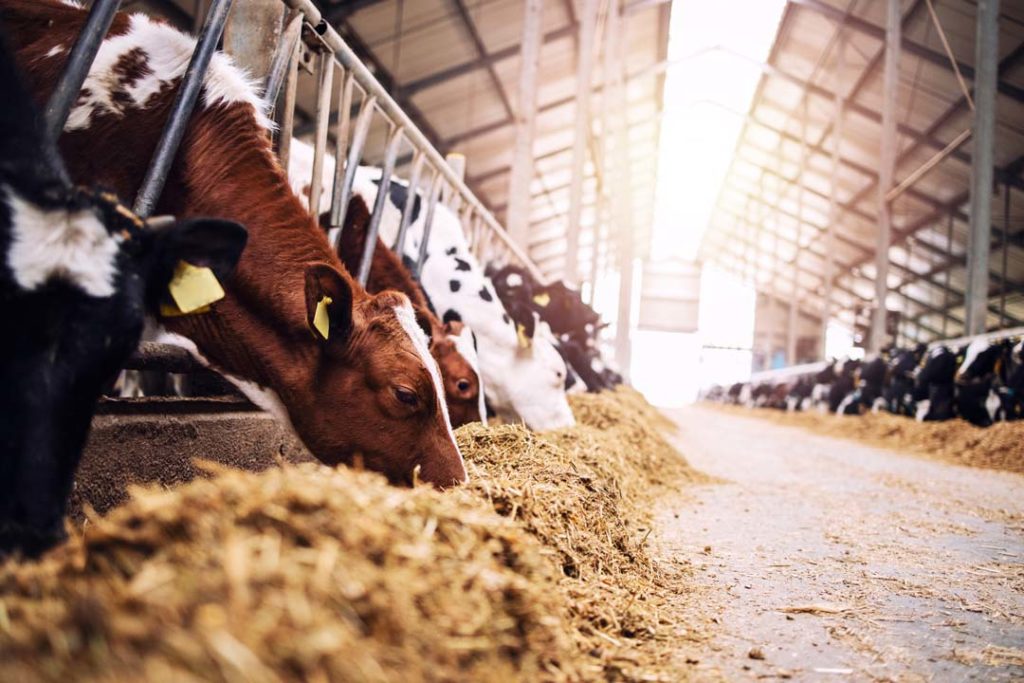Bovine TB
Tb testing goes on relentlessly. We are still finding many reactors, and under the new policy, new herd breakdowns in the badger cull zones are now subjected to Gamma blood testing, APHA arrange this, and we have no involvement. Gamma testing uses a blood sample to collect white blood cells directly from the animal; the presence of any cells that are sensitised to TB that are present in the sample is detected in a laboratory. The correlation is that the presence of cells that are sensitised to bovine TB indicates that the animal is, or has been infected. The test is sensitive, and is reputed to detect animals in the early stage of infection that the skin test might miss. The test and procedure has some disadvantages, not least the need to get the samples to a specific laboratory within 24 hours of sampling. It is basically a skin test in a blood sample, and so can be performed under much more controlled conditions.
The test certainly finds animals that have been missed by the skin test; many of our larger and efficient dairy herds are being decimated by Gamma testing, losing between 10 and 20% of the herd to Gamma. The compensation rates do not cover the consequential losses of losing good cows in milk production. However, there is no doubt that the test is finding infected cows, but of course, as with the skin test, there is no direct correlation between being infected and infectious. Rest assured that like the skin test, the amma test is specific: that means that a positive test is indicative that the animal is or has been infected with TB. The fact that many skin test positive and gamma positive animals do not have visible lesions at post mortem does not mean that there is no disease. The presence of visible lesions is more an indication of the reaction of the cow to the infection, and
the route of infection (by ingestion or by inhalation), and is not correlated to the level of infection of the infectiousness of the animal.
Overall, the level of infection in Devon is reducing: the chart shows the new herd incidents (that is new breakdowns) in the county over the last ten years. There is a decline, but there is still plenty TB about – we need to keep vigilant and keep testing!
More detailed statistics are available on https://www.gov.uk/government/statistics/incidence-oftuberculosis-tb-in-cattle-in-great-britain, with the next update due in March.
Please make sure you give us plenty time to arrange tests: our testing service policy stays the same as before, with the offer of peak time or off peak testing where peak time testing requires you to present at least 70 animals per hour on day 1. We are really grateful that most of our herds have improved handling systems allowing them can easily achieve this target, allowing us to test efficiently, safely and effectively.
We are sorry that we cannot hold our annual farm meeting with such topics as TB control, this year. As soon as the situation allows, we will restore all our meetings and training programmes

Cat neutering
With the help of the Cat Protection League, we are able to offer
neutering of farm or feral cats for the small donation of £10.00 to
the CPL. This donation has to be in cash and accompany the cat!
We can provide a trap to catch the more fiery characters; if you
can catch them, we can neuter them!
You can book them in to either Winkleigh or Witheridge, but as
Winkleigh has limited resources and is extremely busy at the
moment, Witheridge would be preferable. 01884 860236
Sheep topics
Peak lambing time is around again, and the usual array of lambing
time problems are already on us:
Abortions: there are two main types of infectious abortion of ewes:
chlamydia and toxoplasma. It is important to differentiate between
them as the control and prevention are totally different for the
different types of abortion.
If ewes start aborting, please get samples, preferably fresh placenta
and any aborted foetuses. We may also need to take blood
samples, to make a specific diagnosis.
There are ways of managing any abortion storm if the problem is
caught early. Of course, vaccination prior to pregnancy is very
effective, but it is important to know what you are vaccinating
against.
Lambing offer: We are repeating our usual lambing offer this
season: any sheep brought to the surgery between 2pm and
5.30pm on any weekday will be sorted for a fixed price of £35.00
plus VAT. This increase from last year is to reflect our increased
costs. We will lamb it, caesar it, repair it, replace a prolapse or treat
it for this fixed price, plus the cost of any materials or medicines
that are used. We will also do batches of in-turned eyelids etc. for
the same price.
The offer is to encourage early intervention in animals that need
veterinary help, and make best use of our farm vets who tend to be
quieter in the afternoons. However, the system should not be
abused: an urgent lambing needs urgent attention, whatever the
time of day. Please do not try and keep lambing cases dormant until
the 2.00pm watershed, compromising the welfare of the sheep and
the prognosis of the lambs for the sake of saving a few pounds.
Always phone before you come so that we can have a vet ready.
Intramammary tubes
There is a continued problem with the supply of intramammary
antibiotic tubes for the treatment of clinical mastitis. This has
compromised the choice of antibiotics that are available to treat
affected cows.
The tubes that are currently available are listed in the attached
chart. Please speak to your lead vet (who is responsible for
prescribing to your herd) to make the correct choice for treatment.

Reviving the neonate
The recovery position:
Hanging newborn calves or lambs upside down, or over a gate in an attempt to revive them and stimulate breathing does more harm than good. The fluids that are often seen draining from their nostrils when such things are done are actually surfactants that help the airways to open. Breathing is best stimulated by cold water (the stimulus to breath is a change in temperature) or stimulation of the nostrils or tissues between the nostrils. The picture shows the accepted position to place a calf or lamb whilst it recovers from a difficult or traumatic birth, easing pressure on the chest and allowing air to enter the lungs.
In many cases, where breathing does not start and the heart is seen to fade, the damage has been done by the pressure on the chest during delivery, which crushes the lungs and heart. The chest is the largest diameter of the calf or lamb, and is thus most susceptible to damage during a tight or protracted birth.

